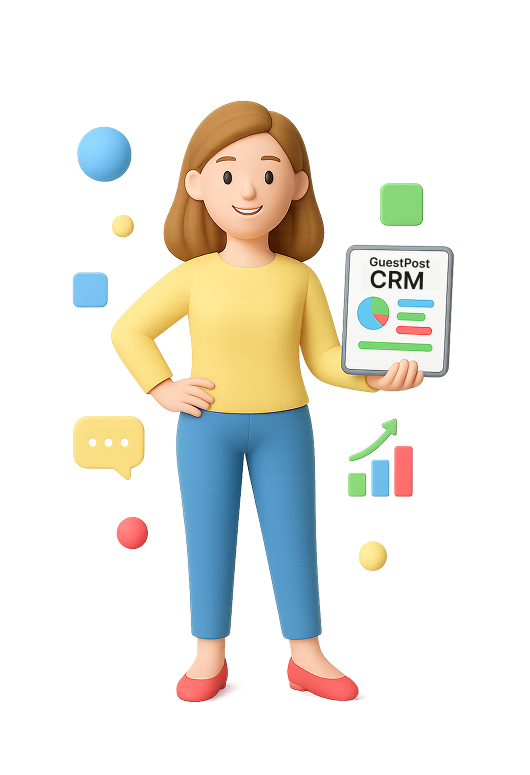How do you know if your marketing campaigns are working?
In today’s digital landscape, having a strong online presence is crucial. However, running your campaign alone is not enough; you must evaluate digital marketing performance consistently to ensure that your strategies are producing real results.
Evaluating marketing performance is essential to measure success. Without assessing your marketing strategies, it is possible to get lost in the digital crowd. Evaluation of the effectiveness of your strategies ensures that you are making informed decisions. The best way to ensure this is to use the right metrics to assess your marketing performance. In simple words, you need to measure what you aimed to achieve and whether you have achieved it or not.
For digital marketers, business owners, or entrepreneurs, understanding how to evaluate your marketing efforts can help you optimize campaigns, improve ROI, and make smarter data-driven decisions.
If you want to evaluate digital marketing campaigns, here’s an overview of how to measure marketing effectiveness and strategies to improve performance.
Why Do You Need to Evaluate Digital Marketing Performance?

Before jumping into the evaluation of digital marketing results, first, let’s understand why it is important to assess marketing strategies:
- Measure ROI: Evaluation helps track your return on time and money investment.
- Identify the Right Strategy: Helps identify the right platforms, messages, and campaigns that drive better results.
- Optimize Strategy: Refine your content, ads, and approaches as per real data.
- Justify Investment: Proves the value of your marketing to stakeholders.
Steps to Evaluate Digital Marketing Performance
Every business has a different target audience, goals, and strategies. Every evaluation starts with well-defined and clear objectives. Not knowing what you are trying to achieve makes it impossible to assess success accurately:
1. Define Goals Clearly
Set SMART goals that have the following characteristics:
- Specific: State clearly what you want to achieve.
- Measurable: Measure and track your goals/progress.
- Achievable: Set practical and realistic goals that are within reach.
- Relevant: It must align with your overall business goals.
- Time-bound: Set a clear timeline to accomplish your goals within a reasonable timeframe.
2. Identify Key Performance Indicators (KPIs)
Choose the right KPIs to measure success. However, KPIs may vary depending on your respective marketing goals and channels. A few common KPIs include:
- Website Traffic.
- Conversion Rate.
- Cost Per Lead (CPL).
- Customer Acquisition Cost (CAC).
- Email Open Rates and Click Rates.
- Search Engine Ranking.
- Bounce Rate and Session Duration.
- Social Media Engagements.
- Return on Ad Spend (ROAS).
3. Right Analytic Tools to Collect Data
There are several effective analytical tools available that can successfully monitor and analyze marketing performance:
- Google Analytics: Provides an overview of traffic sources, user behavior, lead and conversion tracking, etc.
- Google Search Console: Monitors organic search performance, SEO, CTRs, and issues related to indexing.
- SEMrush/ Ahrefs / Moz: Track SEO, keywords, and backlinks.
- HubSpot/ Salesforce/ Freshsales: Solutions that organize customer interactions, help build better relationships, and assist with leads and sales monitoring.
- Mailchimp / ActiveCampaign: They give results on metrics such as open rate, click-through-rate (CTR) and unsubscribe rate.
- Google Ads / Meta Ads Manager: They are used to manage and track digital advertising campaigns. They also help analyze pay-per-click (PPC) performance.
4. Evaluate Digital Marketing Performance by Channel
Now, let us look at those metrics that are associated with each channel of digital marketing to determine how you can evaluate your digital marketing performance:
Website Performance Metrics
- Traffic Sources: Where do visitors come from?
- Bounce Rate: The number of users who leave right after viewing your site, without interacting with it.
- Pages Per Session: Higher number of pages indicates more engagement and interest.
- Average Session Duration: The time that users spend on your website.
SEO Performance Metrics
- Organic Traffic: What is the amount of traffic search engines drive?
- Keyword Ranking: Which keywords drive the most traffic, and are the targeted keywords moving up in the SERPs?
- Click-Through Rate: What is the percentage of CTR in search results?
- Backlinks: Which channel/referring domains send more qualified visitors?
PPC Performance Metrics
- Return on Ad Spend (ROAS): Revenue generated by every dollar spent on ads.
- Cost Per Click (CPC): Average cost for each click on an ad.
- Conversion Rate: Percentage of users who engage in the desired action.
- Impressions & Clicks: How much visibility & engagement are you getting from your ads?
Email Marketing Metrics
- Open Rate: The number of users who open your emails.
- Conversion Rate: Percentage of users who completed the desired action.
- Unsubscribe Rate: Number of users who unsubscribe from your email list.
- CTR: The users click on a link.
Social Media Metrics
- Increased Followers: Track weekly or monthly growth of your followers.
- Engagement Rate: Which platform generates the most traffic and numbers of likes, shares, & impressions on posts?
- Reach & Impressions: Number of people who saw your content.
- Referral Traffic: Where are the visitors coming from? (Instagram, LinkedIn, YouTube).
5. Monitor Progress Over Time
You can set up a weekly, monthly or quarterly meeting to summarize and discuss key points such as:
- Compare week-over-week, month-over-month, and year-over-year results.
- Identify seasonal patterns.
- Compare your results to the industry benchmark to find out where you stand.
6. Create a Marketing Performance Dashboard
You can create visual dashboards that allow you to monitor all major metrics in one place and facilitate easy identification of trends. Here are tools that you can use to build dashboards:
- Klipfolio: Custom, real-time dashboards that display detailed data.
- Databox: Mobile-friendly and goal-tracking tool. It sends alerts when KPIs go up or down.
- HubSpot Dashboard: Track KPIs like landing page conversions, email openings, etc.
- Google Looker Studio: Free data visualization tool with interactive dashboards & reports.
7. Conduct Regular Reports & Audits
Evaluation is not a one-time task; rather, it is an ongoing process. To evaluate your marketing performance thoroughly, you can set up a reporting schedule to summarize main points such as
- Campaign performance.
- Highlights and lowlights of campaign.
- Revenue and Conversions.
- Website metrics.
- Content strategy.
- Technical glitches encountered.
- Users' behaviors.
- Future action plans.
8. Make data-driven Improvements
After you collect all the required data relevant to your marketing performance, take actionable steps to further improve your strategies that can deliver high-quality and optimized results. Some data-driven actions that can be taken are
- Enhance ad creatives.
- Use semantic keywords.
- Update and refine your content.
- Personalize your email content.
- Tailor your SEO strategy.
- Focus on high-performing ads or keywords.
- A/B test landing pages.
Conclusion
Today, marketers have access to a huge amount of data that allows for a deeper understanding of how effective marketing strategies are. Evaluating digital marketing is not just about collecting data but measuring how well your strategies perform, what data you collect, what you learn from the data, and what insight that learning provides. Each marketer can evaluate the overall efficiency of their marketing strategies by defining their objectives, choosing the right KPI's, identifying the correct data analysis tool, tracking their metrics diligently, and sharing/reviewing their findings regularly. This will support the decisions that can lead to improved performance. Tracking analytics and KPI metrics will allow marketers to unleash their full potential and adapt to new trends more promptly. So, start evaluating your digital marketing performance with these effective steps.
Read More:
How ScoopUpdates .com Delivers the Latest Insights in Tech and Marketing
Affordable Digital Marketing with Garage2Global: Smart Growth on a Budget





.png)
.png)


.png)